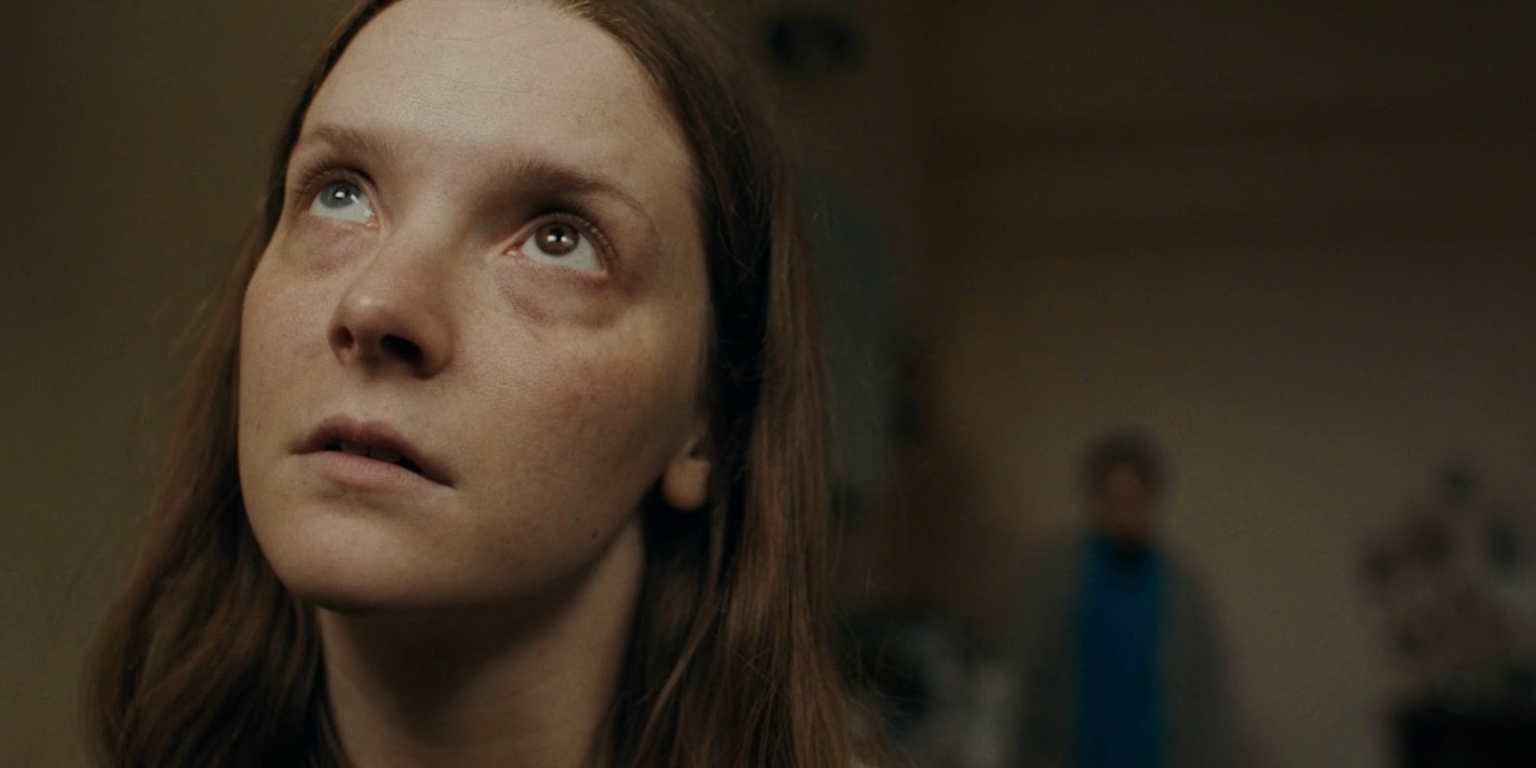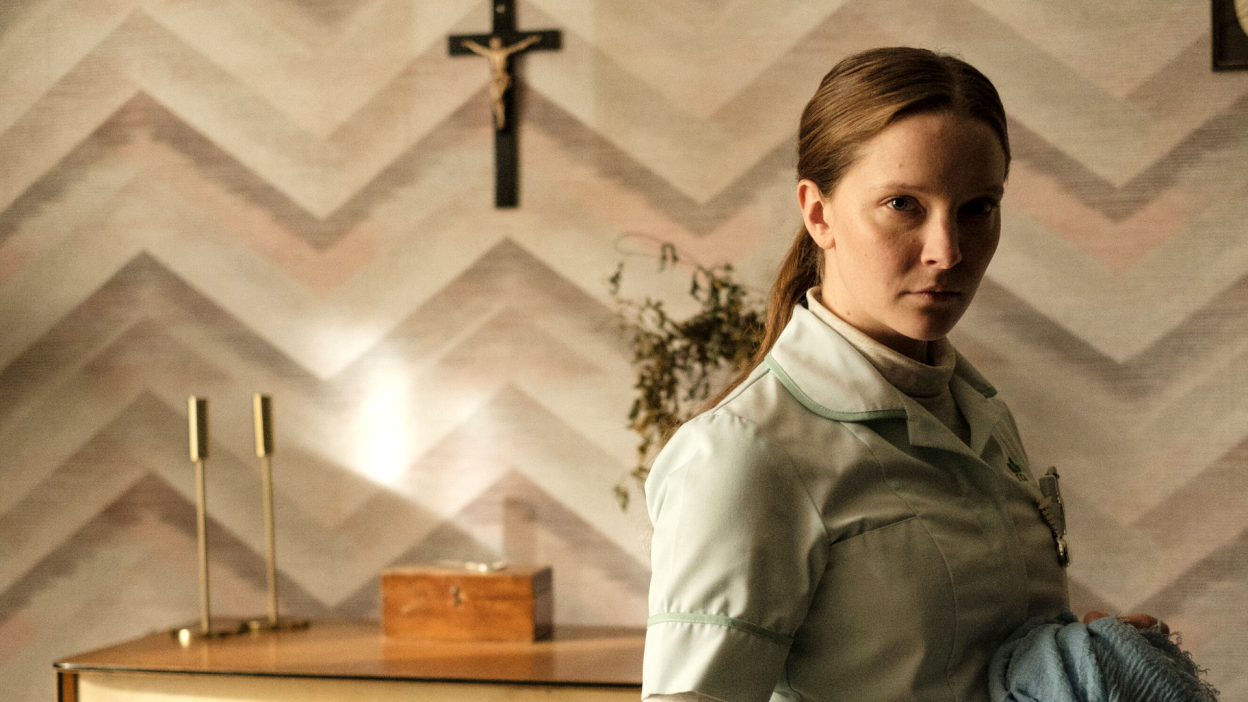Saint Maud, the feature film debut from writer-director Rose Glass, follows Katie, a young woman who prefers the name Maud, as she navigates life through the lens of her devout Catholic faith. Working as a private nurse, Maud is socially isolated and emotionally distant; her interactions with others are filtered entirely through her religious convictions. When she begins caring for Amanda, a terminally ill woman, Maud’s obsession with both her faith and her patient intensifies, leading to a tense, unsettling dynamic. The film introduces Maud as a complex character whose devotion, loneliness, and inner turmoil shape every aspect of her life, setting the stage for the psychological and horror elements that follow.
Maud’s actions are informed by a traumatic incident at a previous nursing job, which is briefly revealed through flashbacks. The exact nature of this event remains deliberately ambiguous, but it is implied that it had a deeply disturbing impact on her psyche. The film intentionally limits perspective to Maud’s point of view, preventing the audience from fully understanding her past or her motivations. This narrative choice immerses viewers in Maud’s isolated and fractured mental state, emphasizing the inescapable weight of guilt and trauma that drives her behavior. Maud’s inability to confront her past directly amplifies her obsession with religion and her need for redemption.
Maud’s religious devotion is not only a personal belief system but also a coping mechanism for her loneliness and guilt. Her fixation on saving Amanda’s soul can be interpreted as an attempt to erase her own perceived sins through acts of piety. Maud equates spiritual salvation with moral worth, believing that by guiding Amanda toward God, she can achieve her own sense of purpose and righteousness. Her faith becomes both a lens and a weapon: it shapes her reality, justifies her actions, and allows her to impose her moral framework on those around her. In this way, Maud’s obsession is a combination of genuine care, spiritual fervor, and a desperate quest for personal redemption.

Maud’s Distorted Perception of Reality Creates Isolation, Conflict, and Heightened Psychological Horror
Although the film employs surrealistic visual and narrative techniques, its central concerns are profoundly real and human. Loneliness pervades Maud’s life, and religion functions as both her solace and her prison. Her attempts to connect with Amanda are inseparable from her desire to convert her to Catholicism, despite Amanda’s disinterest. This tension highlights the contrast between Maud’s perception of reality and how others see her. Amanda’s polite amusement and mild sarcasm stand in stark opposition to Maud’s intense self-conception as a devoted caretaker, demonstrating the ways in which Maud’s worldview isolates her further.
Maud’s self-perception as a savior clashes with the world’s perception of her, creating a powerful narrative tension. Throughout the film, Maud interprets Amanda’s reactions as signs of spiritual progress, while Amanda sees Maud as increasingly intrusive and obsessive. This dissonance escalates toward the film’s climax on a public beach, where Maud’s inner sense of saintliness is juxtaposed with the horrific reality of her actions. Rose Glass masterfully traps the audience in Maud’s subjective experience, making it difficult to disentangle reality from delusion. This alignment with Maud’s perspective heightens the psychological horror, as viewers witness events filtered through her unstable mind.
Maud’s Obsession Blurs Faith and Madness, Driving Destructive Actions and Tragic Consequences
Maud’s behavior oscillates between extreme piety and violent outbursts, reflecting a fragile boundary between devout religious faith and psychosis. Her obsession with spiritual purity drives her to interpret all actions and interactions through a lens of sin and salvation. This distorted morality allows her to rationalize harmful actions toward others and herself. The film does not depict religion itself as inherently dangerous; instead, it examines how intense devotion can become a vehicle for delusion, highlighting how easily the mind can bend reality to fit a self-constructed narrative. Maud’s story is a meditation on how obsession, loneliness, and guilt can intersect to produce destructive behaviors.
The film’s ending delivers a chilling revelation: the supernatural horrors Maud perceives are entirely products of her mind. In her climactic act of self-immolation, she envisions herself as an angelic martyr, surrounded by worshippers, while the audience sees only a terrified, screaming young woman engulfed in flames. This moment encapsulates the film’s central themes: psychological obsession, religious delusion, and the devastating effects of isolation. The horror emerges not from external forces but from the tragic consequences of Maud’s inner world. Glass’s careful blend of psychological realism and surrealist imagery ensures that the final scene resonates long after the credits, leaving viewers to grapple with the human terror of a mind untethered from reality.



